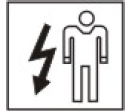Coil cleaning
 |
Warning:
Each fan is equipped with a fan guard and a lockable service switch. The wire spacing in the fan guard and the safety distance of the blade correspond to the European safety standard. The safety guards are protections from contact only. Do not remove the safety guard before the fan is shut down. The rotating impeller may catch in your clothes, cut you or pull you in. |
 |
Warning:
Before starting the service operation, ensure that the electrical supply is reliably isolated; use the lockout/tag-out system. Always check with a voltmeter that the unit is electrically isolated and shut off.    |
 |
Warning:
Before washing the heat transfer section, read the Material Safety Data Sheet of the detergent and follow the manufacturer´s instructions. When vacuum-cleaning and washing the heat transfer section, use protection glasses, safety gloves, safety shoes and other personal protection. |
 |
Warning:
Sharp edges. Use protection glasses, safety gloves, shoes and clothes. |
The normal and continuous operation of the unit increases the risk that the coil becomes dirty. Depending on the environmental working conditions (atmospheric pollution, presence of pollen, dust, working residues, external temperature, distance from the sea, etc.), the build-up of dirt can become serious and lead to the drastic reduction in the performance of the unit.
Depending on the amount of dirt, the coil needs an appropriate cleaning plan.
Remove the dust gathered on the fins of the heat transfer section with a vacuum cleaner on the side of incoming air, or blow off with compressed air on the side of outgoing air.
If vacuuming or compressed air does not clean the heat transfer section, you can wash the fins with running fresh water without pressure on the side of outcoming air. Do not use too strong a water jet and direct it vertically against the fin sides so as not to bend them.

CIP - Cleaning in Place
Mix degreaser with hot water (~40 °C) and spray it on the coil (with a normal hand spray system), seeCIP equipment , where there is a 25 liter plastic can of degreaser and 5 liter hand spray system. Clean the coil with water from the top of the coil. The quantity consumed may vary depending on the amount of dirt in the coil block. The estimated time is 1.5 hours per module. The recommended cleaning interval is 6 months to 1 year, depending on the site conditions.
The recommended cleaning interval is 6 months to 1 year, depending on the site conditions.










